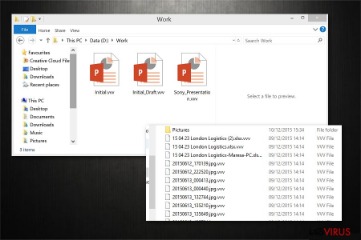
To determine attributable depreciation, the company assumes an asset life and scrap value. Here are a few expenses to understand whether depreciation will be a part of operating expenses. Depreciation cannot be charged on assets that are low in cost for the company. They can also not charge depreciation on assets that will be consumed within one accounting period of their purchase. Depreciation is an operating expense if the asset being depreciated is used in an organization’s main operating activities.
- This expense is considered as an operating expense if the fixed asset depreciated is part of the operational activity.
- Imagine that a company is engaged in manufacturing vehicles.
- Accumulated depreciation, on the other hand, is the total amount that a company has depreciated its assets to date.
- This principle states that companies must match expenses to the revenues they help generate.
- IAS 16 defines depreciation as the systematic allocation of the depreciable amount of an asset over its useful life.
In these cases, the assets contribute directly to the core activities of the underlying company. However, the above case only applies to accumulated depreciation. The term depreciation on its own can cover the expense or the contra-asset account. Companies use various methods to calculate this amount, as stated above.
Is Depreciation an Operating Expense?
For example, they can use straight-line, declining balance, or other depreciation methods. Therefore, depreciation is a non-cash component of operating expenses. The same treatment goes for the amortization of intangible assets. Depreciation refers to the systematic allocation of the cost of a tangible asset over its useful life. It’s an accounting method used to account for the reduction in value of assets like buildings, equipment, machinery, or vehicles that are used in the company’s day-to-day operations. The Internal Revenue Service (IRS) allows businesses to deduct operating expenses if the business operates to earn profits.

Depreciation and amortization are thus part of a noncash expense under the operating expenses. Depreciation expense is a non-cash expense that represents the decrease in value of an asset over time due to wear and tear, obsolescence or other factors. This means that depreciation does not involve any actual cash outflow but rather reflects the loss in value of an asset as it ages.
Please Sign in to set this content as a favorite.
Operating expenses include rent, utilities, staff salaries, and office supplies. So, you can see that depreciation is included as part of the operating expenses, reducing the operating income. However, remember that the $10,000 depreciation expense didn’t involve an actual cash outflow—it simply represented the cost of using the machine for one year. When a company purchases an asset, instead of recognizing the entire cost of the asset as an expense in the year it’s purchased, the cost is spread out over the expected useful life of the asset. This way, the company’s income statements more accurately reflect the cost of using the asset to generate revenue over time.
It should be noted that depreciation does not result in a financial outflow. Choosing between these methods can be challenging as each has unique benefits and drawbacks. For instance, while straight-line may result in more consistent annual expenses, units-of-production might offer greater accuracy when it comes to tracking usage. The cumulative depreciation of an asset up to a single point in its life is called accumulated depreciation. This is because the advancement of computer technology moves at a speed that is very quick and often new technology of today will be obsolete within a very short period. Once that new technology is on the market, your computer’s value will depreciate at an extraordinary rate.
And all the expenses that are part of the cost of operations of a business are accounted for under the head of operating expenses. Depreciation is an accounting process of reducing the value of a long-term tangible or fixed asset over its useful life. This figure shows how much of an asset’s value has been used.
Join PRO or PRO Plus and Get Lifetime Access to Our Premium Materials
The latter definition only applies when referring to accumulated depreciation. Firstly, companies must only depreciate items that fall under the definition of an asset. If those parts do not apply to the underlying resource, they will not fall under assets. However, they may not understand if they can apply this process to a specific asset. This process requires spreading the depreciable amount for the asset over its useful life. Alternatively, companies can use a percentage to depreciate their resources.
However, this cost differs from others in the income statement. Basically, there are two operating expenses viz administrative operating expenses and sales and marketing-related operating expenses. One of the responsibilities that management must contend with is determining how to reduce operating expenses without significantly affecting a firm’s ability to compete with its competitors. Depreciation expense is the amount that a company’s assets are depreciated for a single period (e.g,, quarter or the year). Accumulated depreciation, on the other hand, is the total amount that a company has depreciated its assets to date.
Depreciation Expense
Similarly, it may include various resources, as listed above. The definition for expenses set by the contextual framework also covers depreciation. Essentially, this definition defines “Expenses” as outflows of economic benefits during a period.
Rockwell Automation (NYSE:ROK) Has A Pretty Healthy Balance Sheet – Simply Wall St
Rockwell Automation (NYSE:ROK) Has A Pretty Healthy Balance Sheet.
Posted: Mon, 04 Sep 2023 14:03:19 GMT [source]
On the other hand, it also decreases its carrying value on the balance sheet. Depreciation is also crucial in matching expenses to revenues under the matching concept. Hence, depreciation will not be considered as part of operating expenses in the short term.
In this case, the underlying resource is still a part of the business and operations. Any amounts in this account decrease the carrying value of assets reported in the balance sheet. On the other hand, depreciation also refers to the accumulated amount for different assets. Companies that expense an asset out will include this amount in a contra-asset account. The amount of depreciation needs to be calculated each year and is debited to Income Statement like any other operating expense. Depreciation cumulatively rises over time and hits the cost less salvage value in the final year of useful life.
Transnet swings to R5,7bn loss on lower volumes – The Herald
Transnet swings to R5,7bn loss on lower volumes.
Posted: Sun, 03 Sep 2023 22:00:31 GMT [source]
Companies must use this process consistently for several asset classes. IAS 16 defines depreciation as the systematic allocation of the depreciable amount of an asset over its useful life. The depreciable amount equals the purchase cost of the asset less the salvage value or other amount like the revaluation amount of the asset.
This expense is considered as an operating expense if the fixed asset depreciated is part of the operational activity. Whether you consider depreciation as an operating or non-operating expense largely depends on your perspective and how you choose to categorize expenses within your business. However, regardless of how you classify it, understanding how depreciation works can help ensure accurate financial reporting how to get an employer identification number and decision making for your organization’s procurement needs. Depreciation expense is a significant consideration when it comes to calculating the value of an asset over its useful life. There are different methods of calculating depreciation expenses, each with its advantages and disadvantages. This happens because accumulated depreciation is credited each time the depreciation expense is debited.